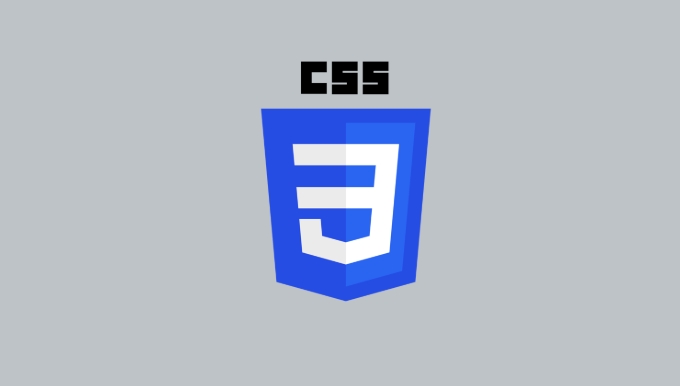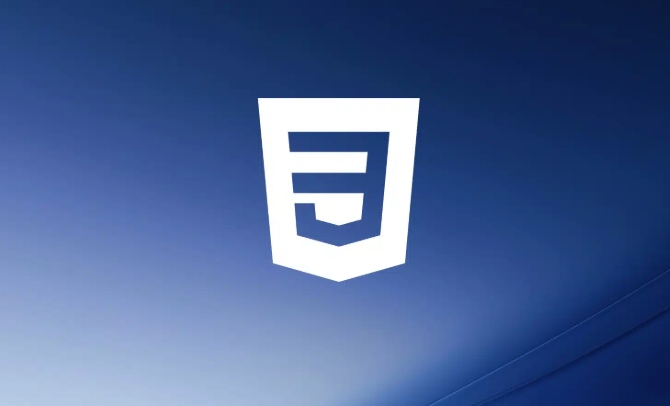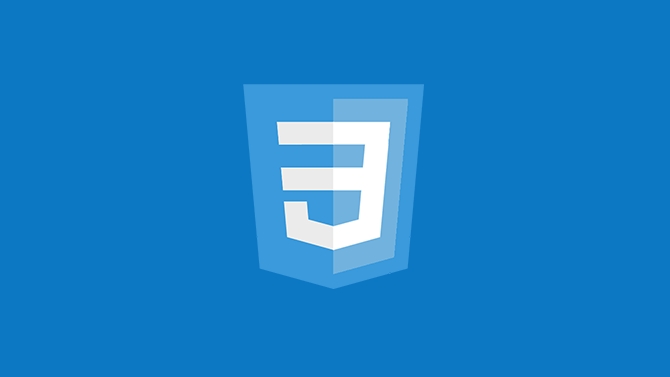The key to mastering modern CSS design is layout, responsiveness, and maintainability. 1. Use CSS Grid and Flexbox to combine layout. Grid is suitable for two-dimensional structures such as the entire page, and Flexbox is suitable for one-dimensional arrangements such as button groups; 2. Use CSS variables to achieve theme switching, define color variables and dynamic switching with JavaScript; 3. Mobile priority and handle responsive details, adopt relative units, picture srcset attributes and centralized media queries; 4. Improve maintainability, use BEM and other naming specifications, split modules, control nesting levels, and separate components and layout styles. These combinations of techniques can significantly improve code quality.

When writing CSS in modern web design, the key is not to master how many selectors or animation attributes, but to understand layout, responsiveness and maintainability. Many people get stuck after learning basic CSS and don’t know how to write more flexible and modern style code. This article talks about several advanced but practical techniques to help you break through this bottleneck.

Combined layout with CSS Grid and Flexbox
Flexbox is good at one-dimensional layouts (such as navigation bars, button groups), while Grid is more suitable for two-dimensional layouts (such as the entire page structure). The two are not substitute relationships, but complementary.

To give a practical example: you make a dashboard page, with the sidebar on the left and the content area on the right. Grid can be used to divide the overall structure:
.dashboard {
display: grid;
grid-template-columns: 250px 1fr;
}Then use the Flexbox layout card components in the content area:

.cards {
display: flex;
gap: 1rem;
flex-wrap: wrap;
}This combination not only keeps the overall structure clear, but also makes the internal elements more flexible.
suggestion:
- First use Grid to divide large areas
- Then use Flexbox to process element arrangement in the area
- Don't force yourself to solve the problem with just one solution
Flexible use of CSS variables to achieve topic switching
CSS custom properties (that is, variables often referred to as variables) are not just to write less duplicate values, its real benefit is to dynamically control the style.
For example, you can define a set of color variables:
:root {
--primary-color: #4a90e2;
--bg-color: #f5f5f5;
}Then refer to these variables in the component:
.button {
background-color: var(--primary-color);
}Want to change the theme? Just change the variable value:
.dark-theme {
--primary-color: #6ec1ff;
--bg-color: #1a1a1a;
}Coupled with JavaScript to dynamically switch class names, you can realize one-click switching between night mode/day mode.
Tips:
- Focus variables in
:rootor topic class management - Automatically recognize dark mode with media query
- Can be compatible with old browsers using PostCSS plug-in
Detailed handling of mobile-first responsive design
"Mobile First" is no longer a new concept, but many people just add the meta viewport tag and just finish it. A truly responsive design should consider breakpoint settings, font adaptation, picture scaling and other aspects.
Recommended practices are:
- Start writing styles from a small screen and gradually enhance them
- Use relative units (em/rem/vw/vh)
- Images are matched with
srcsetandsizesattributes withmax-width: 100% - Media queries should be concentrated inside components, not individual files
For example, a responsive image component can be written like this:
<img src="/static/imghw/default1.png" data-src="small.jpg" class="lazy" srcset="small.jpg 480w, medium.jpg 800w, large.jpg 1200w" sizes="(max-width: 600px) 100vw, 800px" alt="Example Picture" />
In this way, the browser will automatically select the most suitable image to load according to the device width, saving traffic and improving performance.
Write out a CSS structure that is easier to maintain
As the project gets bigger, CSS can easily become messy. In order to avoid the problem of "not daring to delete" in the later stage, it is recommended to pay attention to the organization method from the beginning.
Common practices are:
- Use naming specifications like BEM or SMACSS
- Split CSS into modules (such as
_buttons.scss,_layout.scss) - Avoid excessive nesting, and control the level within 3 layers
- Component style and layout style are written separately
If you are using a tool-first framework like Tailwind or Bootstrap, be careful not to rely on utility class to build it. Appropriately abstracting some reused classes can make the code clearer.
Basically that's it. Advanced CSS does not mean that you need to use a cool feature, but knows when and what methods to use to write style codes with clear structure, strong scalability and convenient maintenance. Many techniques seem simple, but when combined, they are the key to modern web design.
The above is the detailed content of Advanced CSS tutorial for modern web design. For more information, please follow other related articles on the PHP Chinese website!

Hot AI Tools

Undress AI Tool
Undress images for free

Undresser.AI Undress
AI-powered app for creating realistic nude photos

AI Clothes Remover
Online AI tool for removing clothes from photos.

Clothoff.io
AI clothes remover

Video Face Swap
Swap faces in any video effortlessly with our completely free AI face swap tool!

Hot Article

Hot Tools

Notepad++7.3.1
Easy-to-use and free code editor

SublimeText3 Chinese version
Chinese version, very easy to use

Zend Studio 13.0.1
Powerful PHP integrated development environment

Dreamweaver CS6
Visual web development tools

SublimeText3 Mac version
God-level code editing software (SublimeText3)

Hot Topics
 What is Autoprefixer and how does it work?
Jul 02, 2025 am 01:15 AM
What is Autoprefixer and how does it work?
Jul 02, 2025 am 01:15 AM
Autoprefixer is a tool that automatically adds vendor prefixes to CSS attributes based on the target browser scope. 1. It solves the problem of manually maintaining prefixes with errors; 2. Work through the PostCSS plug-in form, parse CSS, analyze attributes that need to be prefixed, and generate code according to configuration; 3. The usage steps include installing plug-ins, setting browserslist, and enabling them in the build process; 4. Notes include not manually adding prefixes, keeping configuration updates, prefixes not all attributes, and it is recommended to use them with the preprocessor.
 CSS tutorial for creating a sticky header or footer
Jul 02, 2025 am 01:04 AM
CSS tutorial for creating a sticky header or footer
Jul 02, 2025 am 01:04 AM
TocreatestickyheadersandfooterswithCSS,useposition:stickyforheaderswithtopvalueandz-index,ensuringparentcontainersdon’trestrictit.1.Forstickyheaders:setposition:sticky,top:0,z-index,andbackgroundcolor.2.Forstickyfooters,betteruseposition:fixedwithbot
 CSS tutorial for creating loading spinners and animations
Jul 07, 2025 am 12:07 AM
CSS tutorial for creating loading spinners and animations
Jul 07, 2025 am 12:07 AM
There are three ways to create a CSS loading rotator: 1. Use the basic rotator of borders to achieve simple animation through HTML and CSS; 2. Use a custom rotator of multiple points to achieve the jump effect through different delay times; 3. Add a rotator in the button and switch classes through JavaScript to display the loading status. Each approach emphasizes the importance of design details such as color, size, accessibility and performance optimization to enhance the user experience.
 CSS tutorial focusing on mobile-first design
Jul 02, 2025 am 12:52 AM
CSS tutorial focusing on mobile-first design
Jul 02, 2025 am 12:52 AM
Mobile-firstCSSdesignrequiressettingtheviewportmetatag,usingrelativeunits,stylingfromsmallscreensup,optimizingtypographyandtouchtargets.First,addtocontrolscaling.Second,use%,em,orreminsteadofpixelsforflexiblelayouts.Third,writebasestylesformobile,the
 How to create an intrinsically responsive grid layout?
Jul 02, 2025 am 01:19 AM
How to create an intrinsically responsive grid layout?
Jul 02, 2025 am 01:19 AM
To create an intrinsic responsive grid layout, the core method is to use CSSGrid's repeat(auto-fit,minmax()) mode; 1. Set grid-template-columns:repeat(auto-fit,minmax(200px,1fr)) to let the browser automatically adjust the number of columns and limit the minimum and maximum widths of each column; 2. Use gap to control grid spacing; 3. The container should be set to relative units such as width:100%, and use box-sizing:border-box to avoid width calculation errors and center them with margin:auto; 4. Optionally set the row height and content alignment to improve visual consistency, such as row
 How to center an entire grid within the viewport?
Jul 02, 2025 am 12:53 AM
How to center an entire grid within the viewport?
Jul 02, 2025 am 12:53 AM
To make the entire grid layout centered in the viewport, it can be achieved by the following methods: 1. Use margin:0auto to achieve horizontal centering, and the container needs to be set to set the fixed width, which is suitable for fixed layout; 2. Use Flexbox to set the justify-content and align-items properties in the outer container, and combine min-height:100vh to achieve vertical and horizontal centering, which is suitable for full-screen display scenarios; 3. Use CSSGrid's place-items property to quickly center on the parent container, which is simple and has good support from modern browsers, and at the same time, it is necessary to ensure that the parent container has sufficient height. Each method has applicable scenarios and restrictions, just choose the appropriate solution according to actual needs.
 What is feature detection in CSS using @supports?
Jul 02, 2025 am 01:14 AM
What is feature detection in CSS using @supports?
Jul 02, 2025 am 01:14 AM
FeaturedetectioninCSSusing@supportschecksifabrowsersupportsaspecificfeaturebeforeapplyingrelatedstyles.1.ItusesconditionalCSSblocksbasedonproperty-valuepairs,suchas@supports(display:grid).2.Thismethodensuresfuturecompatibilityandavoidsrelianceonunrel
 Addressing CSS Browser Compatibility issues and prefixes
Jul 07, 2025 am 01:44 AM
Addressing CSS Browser Compatibility issues and prefixes
Jul 07, 2025 am 01:44 AM
To deal with CSS browser compatibility and prefix issues, you need to understand the differences in browser support and use vendor prefixes reasonably. 1. Understand common problems such as Flexbox and Grid support, position:sticky invalid, and animation performance is different; 2. Check CanIuse confirmation feature support status; 3. Correctly use -webkit-, -moz-, -ms-, -o- and other manufacturer prefixes; 4. It is recommended to use Autoprefixer to automatically add prefixes; 5. Install PostCSS and configure browserslist to specify the target browser; 6. Automatically handle compatibility during construction; 7. Modernizr detection features can be used for old projects; 8. No need to pursue consistency of all browsers,






